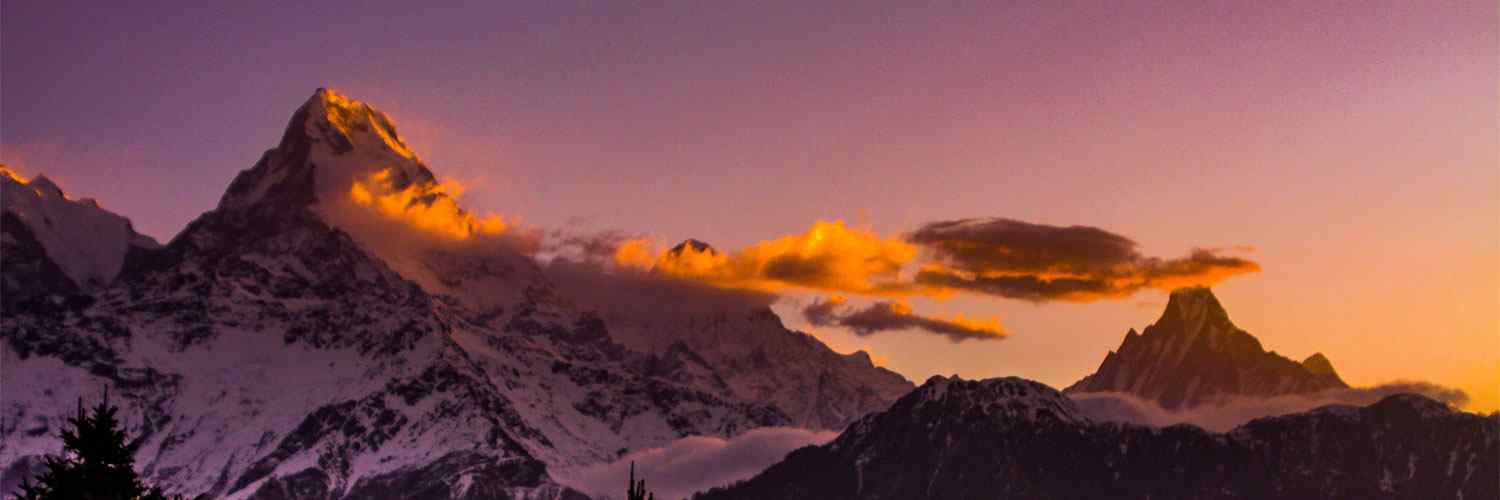
Ghorepani Poonhill Trek is undoubtedly one of the best trekking packages in Nepal. It offers some of the best opportunities to experience a typical rural community and top-notch racial generosity. This trek is regarded as one of the best short treks in Nepal. It is, indeed a moderately easy hike rambling through old-world Gurung hamlets, multihued rhododendron forests and awe-inspiring panoramic sights of the colossal Himalayan mountains. Wrapping up in the mesmerizing spot at Poon Hill, the supplementary charisma of the neatly terraced paddy fields, fabulous mountain vistas, amiable Gurung hamlets, and blossoming rhododendron forests makes this short and easy trekking package in Nepal every photographer’s ecstasy.
The Ghorepani Poonhill trekking itinerary commences with a sensational sightseeing exploration to some of the famous cultural and historical landmarks solicited by UNESCO as world heritage sites in Kathmandu. A short captivating flight from the capital city will carry visitors to the lake city of Pokhara, from where it is a short drive to the start point of this popular trekking in Nepal. Awaiting trekkers on this spree is a jumble of Nepalese magnificence through the sub-tropical valleys, paved stone staircases, and chirping bird reverberations in the impenetrable forests. Beginning the spectacular hike from Nayapul, there are several picturesque villages to stumble upon such as Birethanti, Sudame, Ulleri, Banthanti, Nangethanti, Ghorepani, Tadapani, Tikhedhunga, and Ghandruk. These villages have their own uniqueness and their own natural settings. Hiking trail in the popular trekking route in Nepal’s Annapurna region navigates through rhododendron, maple and oak forests, precipitous staircases treading along conventional hamlets with mind-blowing views of the epochal mountain peaks such as Machhapuchhre, Tukuche, Nilgiri, Annapurna South, Dhaulagiri, Hiunchuli and many more.
Ghorepani Poonhill Trek, also at times acknowledged as Annapurna Sunrise Trek is a fantabulous hike and it can be boarded throughout the year although the best season for trekking in Nepal would, of course, be during the spring or autumn seasons. This particular trek isn’t as challenging as others and influences of the altitude would be minimal, thus it can be participated by all age groups. The only prerequisite would be a superior matchup of hiking shoes, a fluffy day pack, balmy clothing, and a comfy sleeping bag. For enthusiasts looking out for a less-demanding trekking package in Nepal, or a short and beautiful family trekking package in Nepal, this trekking package in the Annapurna region is unbeatably the best trekking option in Nepal. Not to mention that a previous hiking experience would rather make your trekking voyage more enthralling and more adventurous.
Similar trips in the Annapurna region trekking are the Annapurna Sanctuary Trek and the Annapurna Circuit Trek, which are the favorite trekking destinations in Nepal for hikers. These Annapurna trek routes offer enough opportunities to come in close proximity to nature and the snow-capped peaks of the Himalayas. Come and join hands with Royal Holidays and experience the brilliance of the ecstatic sunrise views over the snow-attired Himalayas and hike through the foothills of the massive Annapurnas.
Join Our Small Group Departures
View Available Dates


